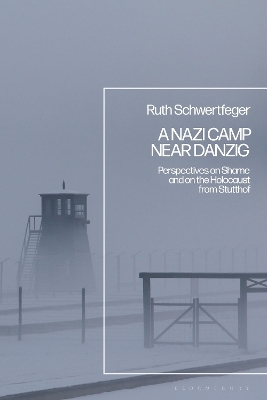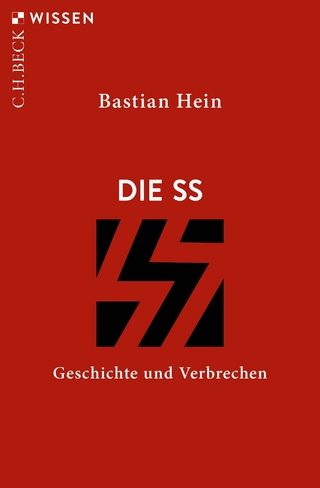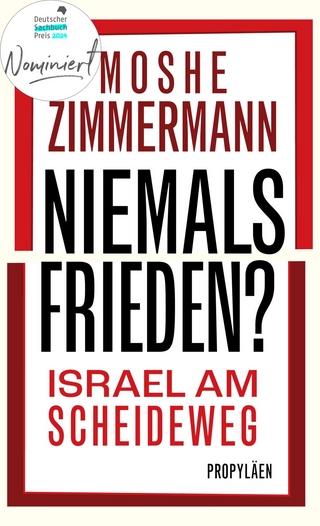
A Nazi Camp Near Danzig
Perspectives on Shame and on the Holocaust from Stutthof
Seiten
2023
Bloomsbury Academic (Verlag)
978-1-350-27404-4 (ISBN)
Bloomsbury Academic (Verlag)
978-1-350-27404-4 (ISBN)
Within the vast network of Nazi camps, Stutthof may be the least known beyond Poland. This book is the first scholarly publication in English to break the silence of Stutthof, where 120,000 people were interned and at least 65,000 perished. A Nazi Camp Near Danzig offers an overview of Stutthof’s history. It also explores Danzig’s significance in promoting the cult of German nationalism which led to Stutthof’s establishment and which shaped its subsequent development in 1942 into a Concentration Camp, with the full resources of the Nazi Reich.
The book shows how Danzig/Gdansk, generally identified as the city where the Second World War started, became under Albert Forster, Hitler’s hand-picked Gauleiter, ‘the vanguard of Germandom in the east’ and with its disputed history, the poster city for the Third Reich. It reflects on the fact that Danzig was close enough to supply Stutthof with both prisoners – initially local Poles and Jews – as well as local men for its SS workforce. Throughout the study, Ruth Schwertfeger draws on the stories of Danziger and Nobel Prize winner, Günter Grass to consider the darker realities of German nationalism that even Grass’s vibrant depictions and wit cannot mask. Schwertfeger demonstrates how German nationalism became more lethal for all prisoners, especially after the summer of 1944 when thousands of Jewish woman died in the Stutthof camp system or perished in the ‘death marches’ after January 1945. Schwertfeger uses archival and literary sources, as well as memoirs, to allow the voices of the victims to speak. Their testimonies are juxtaposed with the justifications of perpetrators. The book successfully argues that, in the end, Stutthof was no less lethal than other camps of the Third Reich, even if it was, and remains, less well-known.
The book shows how Danzig/Gdansk, generally identified as the city where the Second World War started, became under Albert Forster, Hitler’s hand-picked Gauleiter, ‘the vanguard of Germandom in the east’ and with its disputed history, the poster city for the Third Reich. It reflects on the fact that Danzig was close enough to supply Stutthof with both prisoners – initially local Poles and Jews – as well as local men for its SS workforce. Throughout the study, Ruth Schwertfeger draws on the stories of Danziger and Nobel Prize winner, Günter Grass to consider the darker realities of German nationalism that even Grass’s vibrant depictions and wit cannot mask. Schwertfeger demonstrates how German nationalism became more lethal for all prisoners, especially after the summer of 1944 when thousands of Jewish woman died in the Stutthof camp system or perished in the ‘death marches’ after January 1945. Schwertfeger uses archival and literary sources, as well as memoirs, to allow the voices of the victims to speak. Their testimonies are juxtaposed with the justifications of perpetrators. The book successfully argues that, in the end, Stutthof was no less lethal than other camps of the Third Reich, even if it was, and remains, less well-known.
Ruth Schwertfeger is Professor Emerita of German at University of Wisconsin-Milwaukee, USA. She is the author of Women of Theresienstadt (Bloomsbury, 1988), Else Lasker-Schuler (Bloomsbury, 1991) and In Transit (2012).
Introduction
1. Promoting German-Consciousness in a Revamped Gau, 1930-1939
2. Danzig-West Prussia and Stutthof: Implementing Germandom, September 1939 – January 1942
3. Gaining the Next Tier of Germandom as a Nazi Konzentrationslager
4. Entering the Zone of the Final Solution, Summer of 1944
5. The Collapse of Germandom, Winter of 1945
Epilogue
Sources
Abbreviations and Key Terms
Bibliography
Appendices
Index
| Erscheinungsdatum | 05.09.2023 |
|---|---|
| Zusatzinfo | 18 bw illus |
| Verlagsort | London |
| Sprache | englisch |
| Maße | 156 x 234 mm |
| Themenwelt | Geschichte ► Allgemeine Geschichte ► 1918 bis 1945 |
| Geisteswissenschaften ► Geschichte ► Regional- / Ländergeschichte | |
| Geschichte ► Teilgebiete der Geschichte ► Militärgeschichte | |
| ISBN-10 | 1-350-27404-6 / 1350274046 |
| ISBN-13 | 978-1-350-27404-4 / 9781350274044 |
| Zustand | Neuware |
| Haben Sie eine Frage zum Produkt? |
Mehr entdecken
aus dem Bereich
aus dem Bereich


